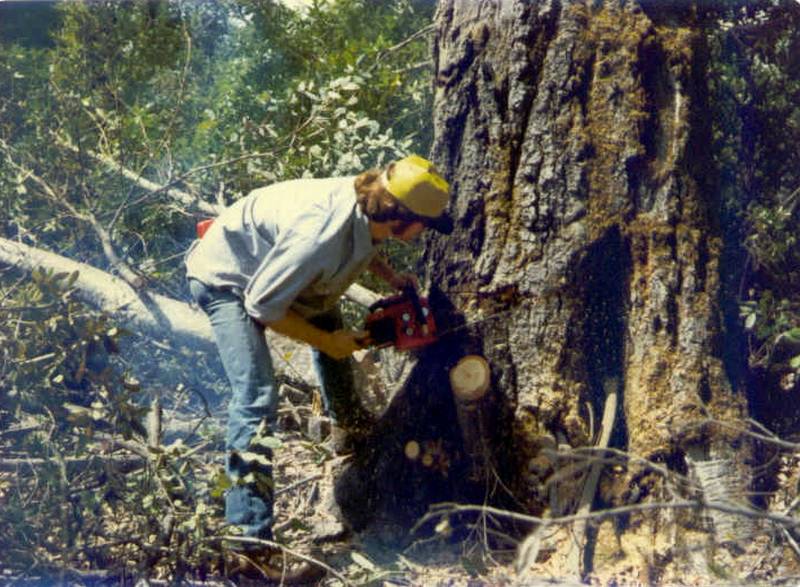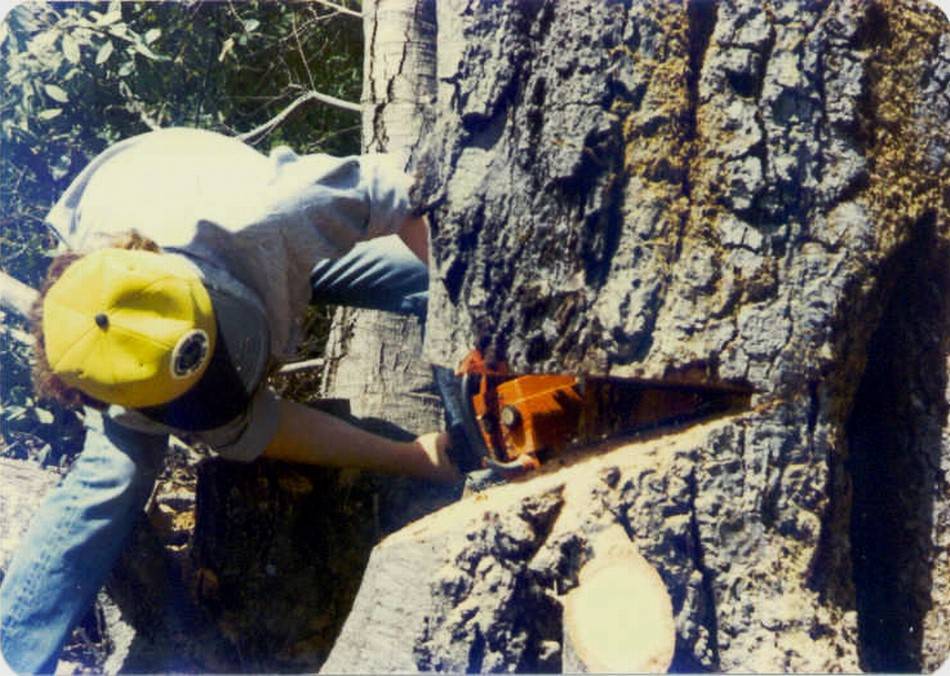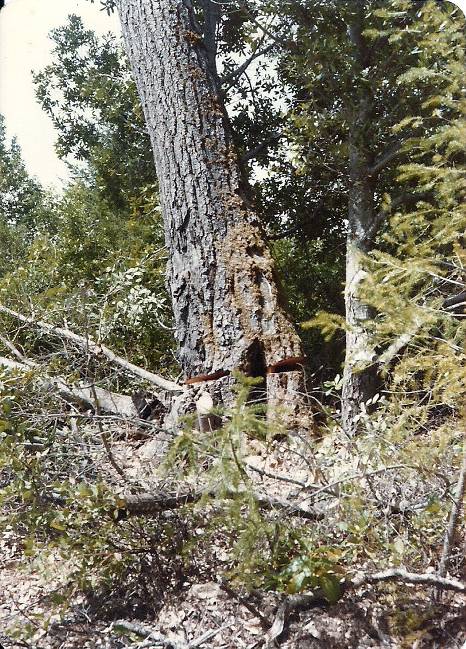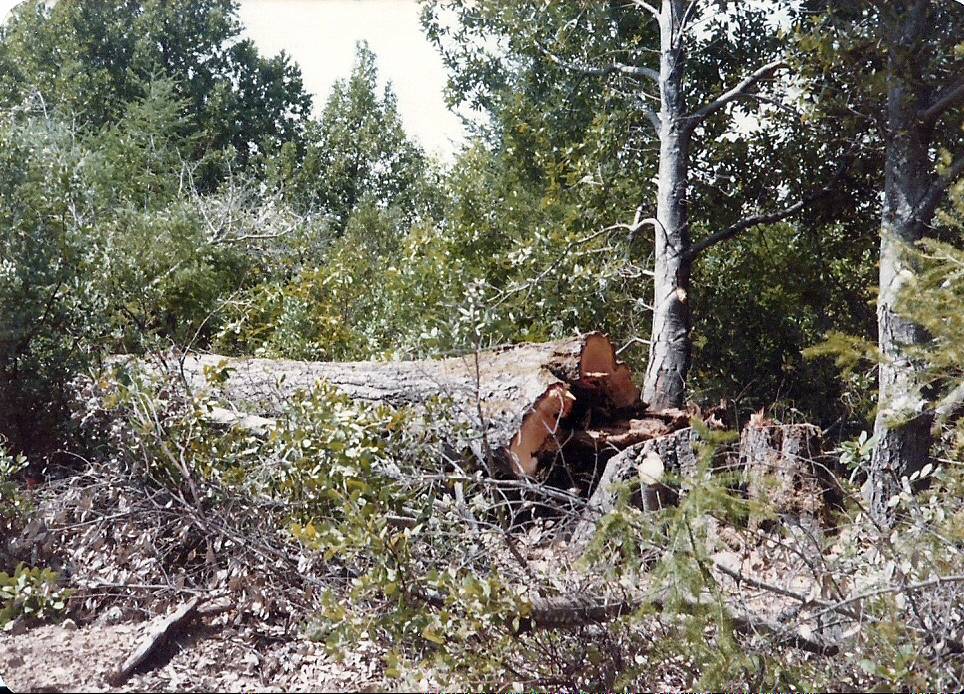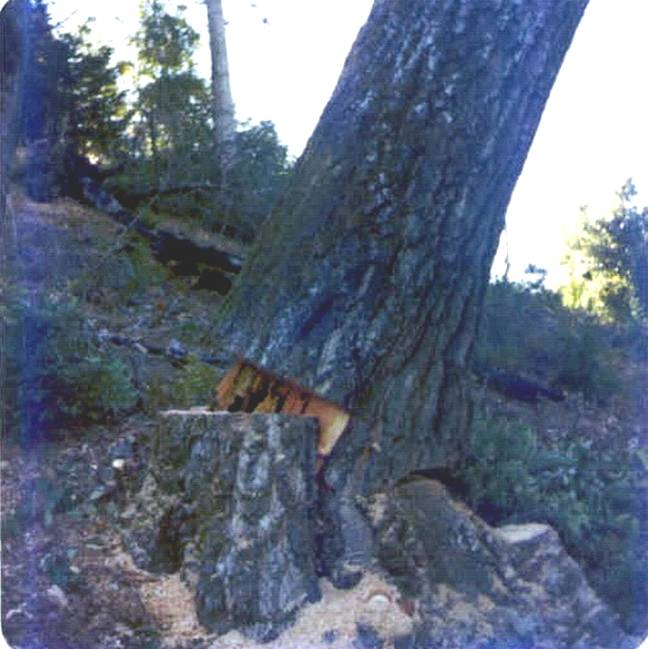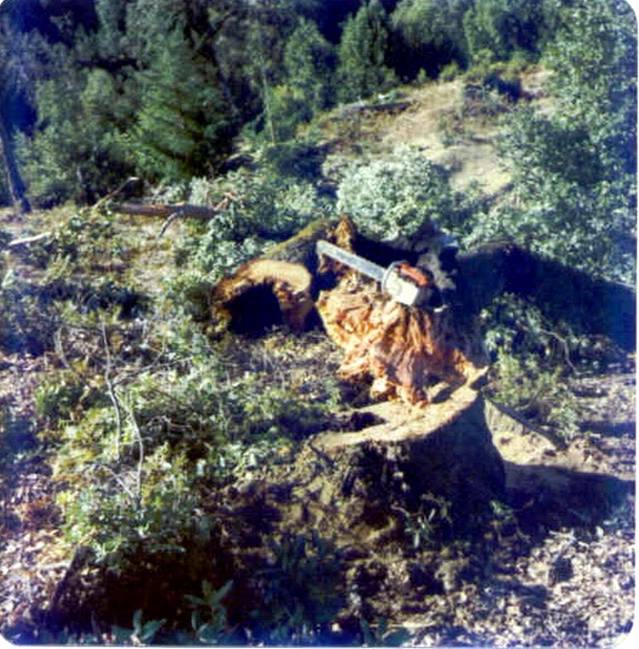I think I gave the wrong impression about the trees.
Where I live, maybe 90% of the trees I deal with are some kind of worthless trash oak, and I would say the majority rot on the inside after they get to maybe 15" in diameter. They live a long time like this, however. They hollow out to some extent, and the remaining wood is generally pretty sound. I have seen live oaks here with 5-6-foot trunks that had rot inside them. The rot and hollowing might be anywhere from 1 foot to 3 feet across, and the wood around it would still be hard. Those are extreme examples.
I do have trees that start to rot very badly while standing up. I don't cut them myself unless it's really obvious it can be done safely. I am especially reluctant to go near rotting trees that are straight and perpendicular to the ground, because if anything falls off while I cut, it will fall straight down.
I have waited for straight dead or dying trees to collapse on their own instead of messing with them. I have one right by my driveway right now, and I haven't touched it. I'm playing the odds, hoping that when the big bits come down, no one will be driving or walking right under them. I'm isolated in the woods, so it's not like I have a constant flow of power-walkers and joggers going by.
They tend to crumble from the top down, which is good. After a while, you have a straight trunk which isn't very tall, and you can shove it over with a tractor without any danger of it coming back at you.
I am not afraid of small trees, fallen trees, and leaners that are pretty sound. The scary trees, I plan to get rid of by hiring a clearing company to shove them over with an excavator or wheel loader, while I sit in my living room, far from danger, preferably drinking homebrew in an expensive recliner. I am told they will give me 8 hours of this for $4500, which is worth it in order to avoid felling trees toward my buildings. I don't care what they hit on the way down, in terms of damage to other trees, and I am happy to cut up and move the trees once they're down.
Right now I have a couple of trees that are nearly horizontal, hanging over a neighbor's property. I am starting to limb them from the tops down, and I am hoping I can keep going, cutting off sections of trunk until I have a manageable segment of trunk left on the roots. If it gets hairy at all, I'll let someone else finish. These trees are not all that big, and I believe I can cut the trunks way back using just a little pole saw, if I'm patient.
I won't get on a ladder to cut a tree, and I don't raise a chainsaw above my shoulders (much), but I am willing to be somewhat braver with a pole saw, since it gets me farther away from what I'm cutting. Maybe that's wrong. Input always appreciated.
I'm more of a bucker than a feller, so I always hope the trees fell themselves before I get there.






